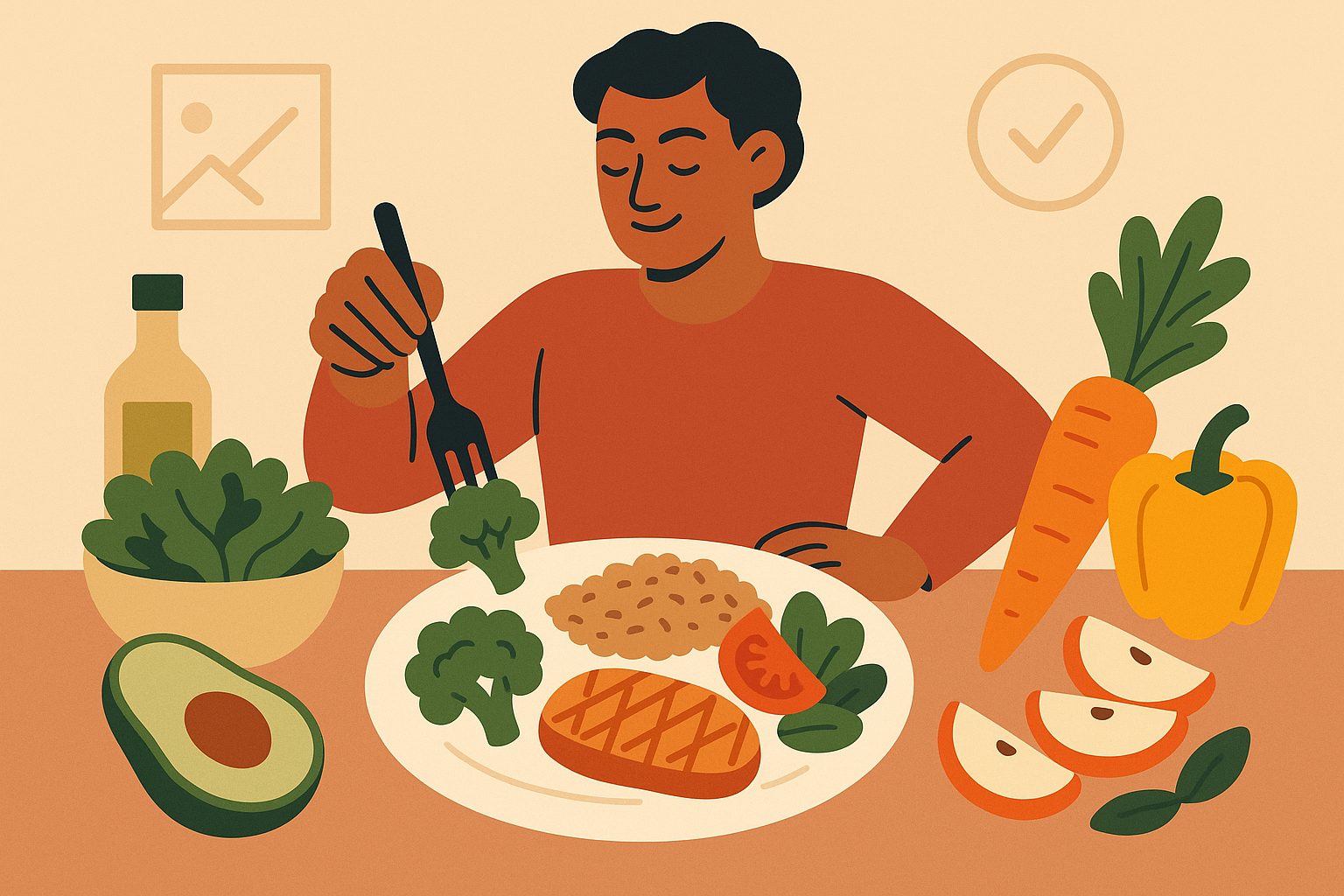Your 1800 Calorie Meal Plan Just Got a Major Upgrade: The Science-Backed Approach That Actually Works

Like most people, I used to think meal planning was just about hitting my calorie target. Calories in, calories out, done. Then I kept failing at it and wondered why some weeks felt easy while others were a total disaster.
The average range for moderately active adults sits around 2,000 to 2,200 calories per day for women and 2,600 to 2,800 calories per day for men, making 1800 calories a strategic choice for sustainable weight management, according to MyFitnessPal. But here’s what nobody talks about – your body basically has an internal schedule, kind of like how you’re naturally more alert in the morning and wind down at night. Same thing happens with how you digest food. Your brain makes completely different food decisions when you’re stressed versus relaxed. Your gut bacteria influence which nutrients you actually absorb.
I’ll be honest – I’ve meal prepped on Sunday only to throw half of it away by Wednesday because I got bored. I’ve calculated perfect macros and then eaten a sleeve of crackers at 9 PM because I was stressed. The difference now isn’t that I never mess up – it’s that I’ve learned to work with my actual life instead of some fantasy version of myself.
Table of Contents
- When You Eat Matters More Than What You Eat: The Timing Revolution
- Why Your Brain Sabotages Your Best Meal Plans (And How to Outsmart It)
- The Social Side of Eating: Making Your Plan Work in the Real World
- Your Body’s Unique Blueprint: Personalizing Beyond Generic Guidelines
- Maximizing Every Bite: The Nutrient Density Game-Changer
TL;DR
- Your body is basically better at processing certain foods at certain times – eating 40-45% of your 1800 calories before 2 PM can dramatically improve results
- Decision fatigue kills meal plans faster than cravings do – design your environment to make healthy choices automatic
- Social situations don’t have to derail your progress when you plan strategically and set boundaries
- Generic meal plans ignore how YOUR body actually works – tracking personal responses leads to better outcomes
- Smart food combinations can increase absorption by up to 300% within the same calorie budget
- Mixing up your calories and macros prevents your metabolism from getting too comfortable while maintaining your 1800-calorie average
When You Eat Matters More Than What You Eat: The Timing Revolution
Your body basically has an internal schedule that makes 8 AM completely different from 8 PM in terms of how you handle food. I discovered this the hard way when I was eating the exact same meals but feeling amazing some days and terrible others, depending on when I ate them.
You know that 3 PM crash when you’d sell your soul for a candy bar? That’s usually because you didn’t eat enough earlier in the day when your body could actually handle it well. Most people obsess over hitting their 1800-calorie target but completely ignore when they consume those calories. Your metabolism isn’t some steady machine – it has predictable ups and downs that you can actually work with.
I know what you’re thinking – “Great, another person telling me to eat perfectly timed meals.” Trust me, I’m not suggesting you become a robot. Some days you’ll eat lunch at 3 PM because life happened. The point is having a general framework, not a rigid prison sentence.
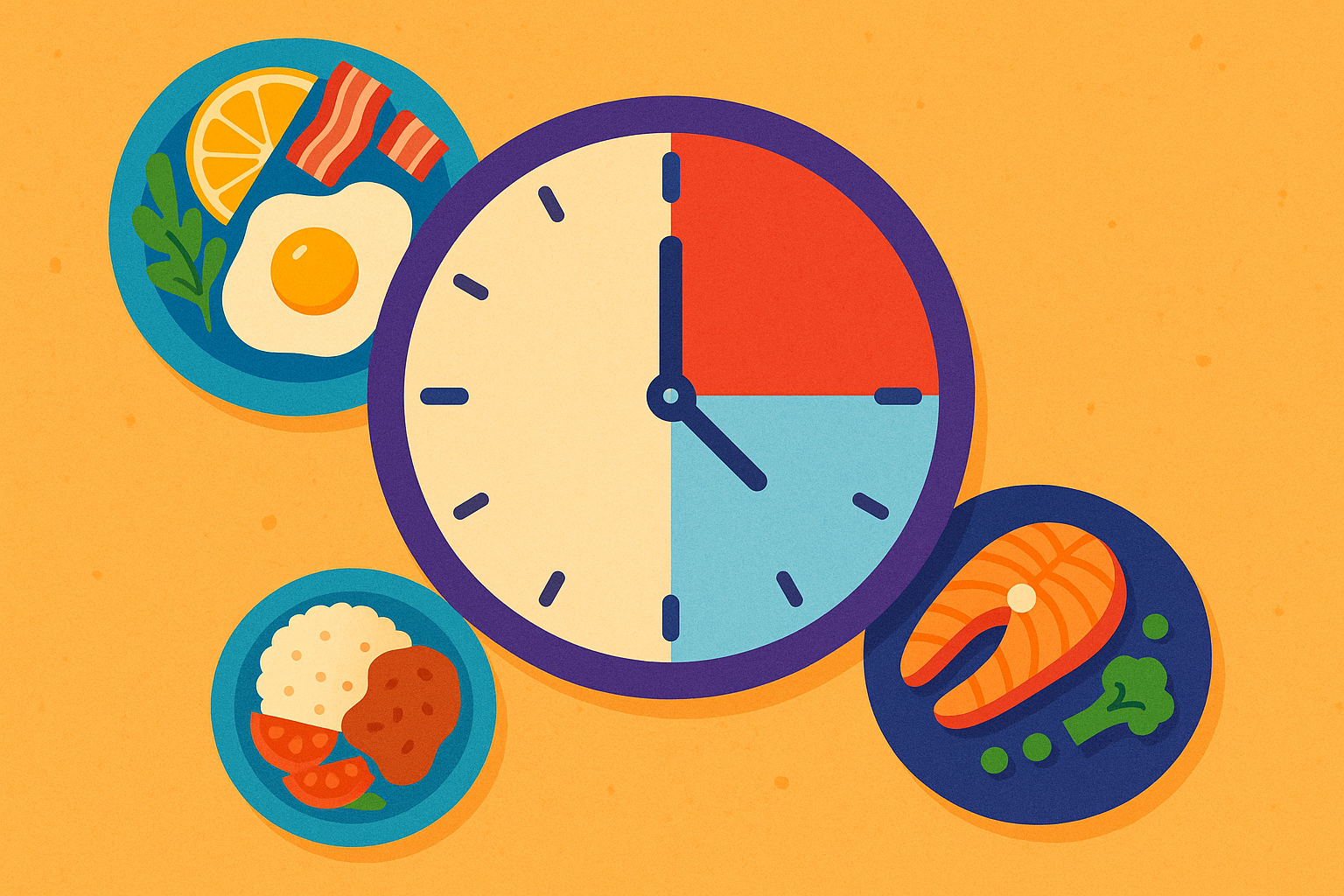
Your Body’s Built-In Meal Schedule
Between 6 AM and 2 PM, your body becomes pretty amazing at processing carbs. This is when you should eat about 40-45% of your daily calories (roughly 720-810 calories) to take advantage of this natural superpower. I started front-loading my day with real food and immediately noticed I wasn’t dragging myself through the afternoon anymore.
Your body follows these patterns whether you pay attention or not. Understanding how your body processes nutrients throughout the day works similarly to learning how to optimize intermittent fasting for women, where timing becomes just as important as what you eat. This natural rhythm approach works with your body’s existing patterns instead of fighting them.
The Morning Window That Changes Everything
Your body handles carbs best in the morning, making this the perfect time for bigger portions and complex carbs. I’ve found that getting 720-810 calories before 2 PM sets me up for stable energy all day and eliminates those brutal afternoon crashes.
Here’s the breakdown that actually works for me:
| Time Window | Calorie Distribution | What to Focus On | Why It Works |
|---|---|---|---|
| 6 AM – 2 PM | 40-45% (720-810 calories) | Complex carbs + protein | Your body handles carbs best now |
| 2 PM – 6 PM | 25-30% (450-540 calories) | Balanced everything | Keeps you steady without crashing |
| 6 PM – 10 PM | 25-30% (450-540 calories) | Lighter protein + veggies | Won’t mess with your sleep |
Here’s how I actually do this:
- Figure out 720-810 calories for your morning window (6 AM – 2 PM)
- Load up on protein and good carbs during this time
- Pay attention to your energy levels for 2 weeks and adjust as needed
Sarah, who works in marketing, restructured her 1800-calorie plan to include a 400-calorie breakfast (Greek yogurt with berries and granola) and a 350-calorie lunch (quinoa bowl with chicken and vegetables) before 2 PM. Within three weeks, she stopped hitting that wall during her afternoon meetings and actually had energy left after work.
Evening Eating That Won’t Sabotage Your Sleep
After 6 PM, your body naturally starts winding down. This doesn’t mean you can’t eat – it means eating smarter. I keep evening meals to about 25-30% of my calories (450-540 calories) and focus on lighter stuff that supports recovery without keeping me up at night.
My evening approach:
- Keep evening calories to 25-30% of daily intake (450-540 calories)
- Focus on lean proteins, vegetables, and healthy fats after 6 PM
- Try to create about a 12-hour eating window when possible
The Order of Operations for Every Meal
The order you eat different foods actually affects how full you feel and how steady your energy stays. I’m not talking about complicated rules – these are simple strategies that work with how your body naturally responds.
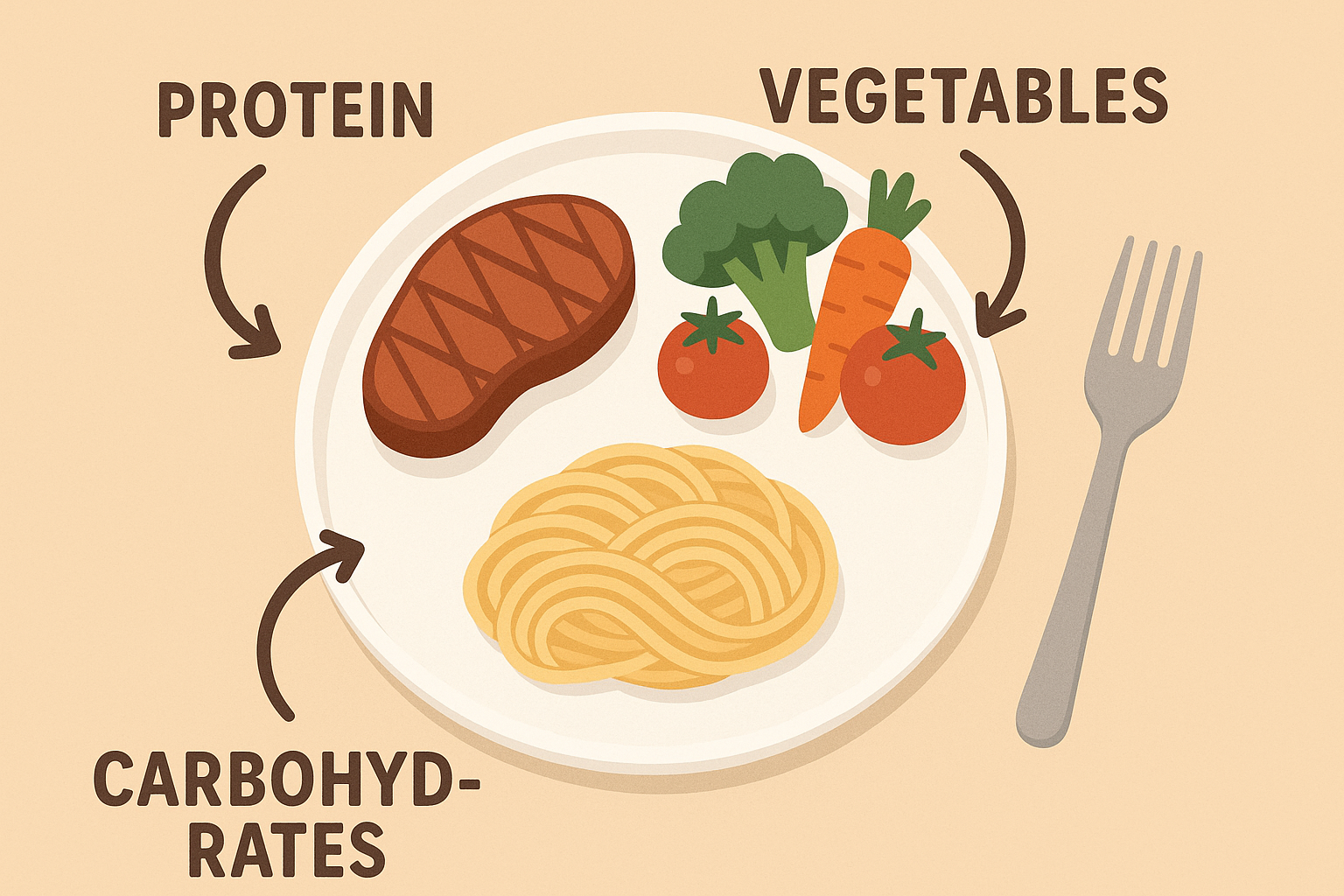
Why Protein Should Always Come First
Starting meals with protein triggers hormones that help you feel satisfied and handle carbs better afterward. This simple change helps you feel more satisfied with smaller portions while keeping your blood sugar steady.
I’ve noticed that when I eat protein first, I naturally eat less overall without feeling deprived. It’s like your body gets the signal that real nutrition is coming and stops panicking about needing more food.
Smart Carb Timing That Actually Makes Sense
Eat carbs when your body can actually use them for energy rather than storing them. This usually means during and right after workouts, or during your morning window when your body is naturally better at handling them.
I time my biggest carb portions around my workouts and during my morning eating window. This way the carbs fuel performance and recovery instead of just hanging around looking for trouble.
Smart Fat Integration for Sustained Energy
Healthy fats slow down digestion and create sustained energy, making them perfect for bridging longer gaps between meals. Strategic fat placement helps you get from your substantial morning intake to lighter evening meals without wanting to eat everything in sight.
Nutrient Timing Windows Most People Miss
Certain vitamins and minerals have optimal absorption windows that most meal plans completely ignore. Understanding these timing principles can dramatically increase the nutritional bang you get from your 1800 calories without adding a single extra food.
The Iron-Vitamin C Power Couple
Pairing iron-rich foods with vitamin C sources during specific meal windows maximizes absorption while avoiding things that block iron uptake. This combo can significantly improve iron status, especially important for women who often struggle with deficiency.
I always pair my spinach salads with citrus fruits or bell peppers, and I’ve learned to keep my coffee away from iron-rich meals by at least two hours. Simple changes, big difference.
B-Vitamin Energy Optimization
Timing B-vitamin rich foods to support your body’s natural energy cycles enhances both physical and mental performance. These nutrients work best when consumed during your active hours rather than being randomly scattered throughout the day.
I load up on B-vitamin rich foods (whole grains, leafy greens, eggs) during my morning and early afternoon windows when my body needs the most energy support.
Why Your Brain Sabotages Your Best Meal Plans (And How to Outsmart It)
Traditional meal planning assumes you’ll make rational food choices all day long. That’s adorable, but it’s not how human psychology actually works. Your eating patterns are heavily influenced by your environment, decision fatigue, and mental shortcuts that happen without you even realizing it.
I used to blame myself when I’d deviate from my carefully planned meals. Then I learned that willpower is like a phone battery – it gets depleted throughout the day. Understanding these psychological drivers and designing around them is crucial for long-term success with any calorie-controlled approach.
Look, I’m not going to pretend you’ll never eat pizza at a birthday party or stress-eat during a rough week. The goal isn’t perfection – it’s having a plan that can handle real life without completely falling apart.
Designing Your Environment for Automatic Success
Making healthy choices the path of least resistance requires strategic thinking about your food environment. I’ve learned that success comes from intelligent design that supports your goals automatically, rather than relying on moment-to-moment willpower.
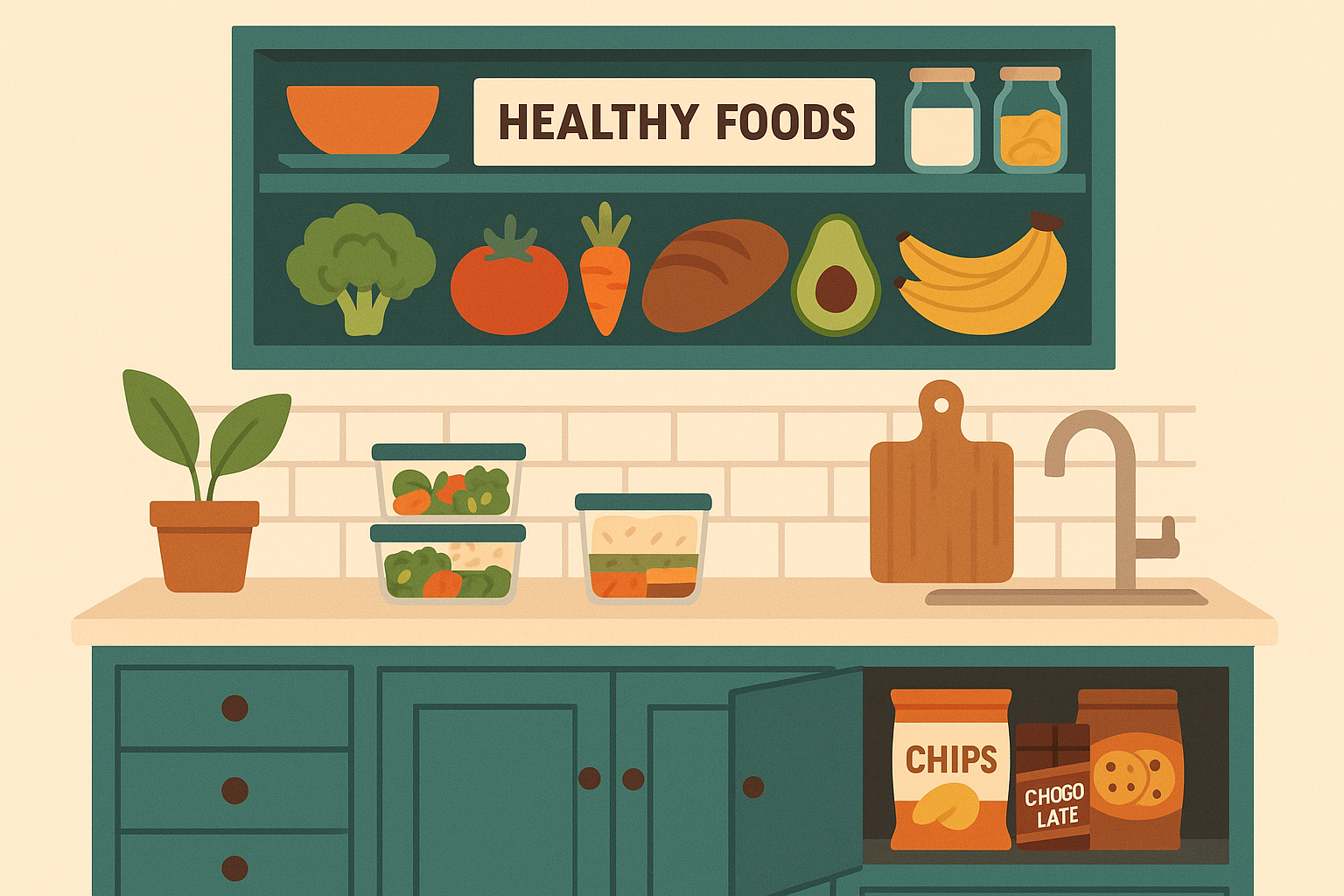
The Kitchen Audit That Actually Works
Looking at your food environment systematically helps identify decision points where you can “nudge” yourself toward better choices without thinking about it. This isn’t about restriction – it’s about intelligent design that supports your goals automatically.
My Kitchen Reality Check:
- ☐ Healthy snacks at eye level in fridge and pantry
- ☐ Pre-portioned 1800-calorie daily containers ready to grab
- ☐ Water bottles visible and easy to reach
- ☐ Smaller plates and bowls as my go-to dinnerware
- ☐ Processed foods stored where I have to work to get them
- ☐ Fresh fruits and vegetables front and center
- ☐ Meal prep ingredients organized and ready to use
Here’s my systematic approach:
- Map all the places you make food decisions (kitchen, office, car, restaurants)
- Identify high-risk moments when willpower is typically shot
- Redesign these spaces to make healthy choices the obvious option
- Create visual reminders of your goals without making it feel restrictive
Adding Helpful Obstacles in All the Right Places
Adding small barriers to less healthy choices while removing obstacles from nutritious options works with your natural tendency to choose the easiest path. This strategy works because it doesn’t rely on motivation or discipline – it works with human nature instead of against it.
Here’s how I engineer helpful friction:
- Pre-portion 1800-calorie daily food into grab-and-go containers
- Put healthy snacks at eye level and less healthy options out of sight
- Prep ingredients for healthy meals while storing processed foods in hard-to-reach places
- Use smaller plates and bowls to naturally control portion sizes
Managing Decision Fatigue Before It Manages You
Decision fatigue significantly impacts food choices, especially later in the day when your mental resources are shot. Successful meal planning requires strategies that minimize the mental energy required for healthy eating decisions.
I used to be the person who would eat 1,200 calories all day and then wonder why I demolished a bag of chips at 10 PM. Turns out starving yourself all day and then expecting perfect willpower at night isn’t actually a sustainable strategy. Who knew?
The Template System That Eliminates Daily Food Stress
I’ve developed a rotation of five different daily templates that I cycle through. Each template hits my calorie and macro targets but uses different flavor profiles and cooking methods. This gives me variety without the mental exhaustion of planning every meal from scratch.
The key is creating templates that feel different enough to prevent boredom but similar enough in structure that preparation becomes automatic.
Mark, a software developer, created three rotating weekly meal templates for his 1800-calorie plan: Mediterranean Monday-Wednesday (featuring olive oil, fish, and vegetables), Asian-inspired Thursday-Friday (with lean proteins, rice, and stir-fried vegetables), and Comfort Food Weekend (including healthier versions of familiar favorites). This system eliminated daily decision-making while providing variety and ensuring he hit his calorie targets consistently.
Batch Decision Making for Better Outcomes
Making food decisions in batches during high-energy periods rather than moment-to-moment throughout the day prevents decision fatigue from derailing your progress. I spend 30 minutes every Sunday planning my entire week’s meals when my brain is fresh and optimistic.
This strategy recognizes that your decision-making capacity is finite and uses it strategically. Instead of making 21 meal decisions throughout the week while tired and stressed, I make them all at once when I’m mentally sharp.
The Social Side of Eating: Making Your Plan Work in the Real World
Your food choices don’t exist in isolation – they’re deeply influenced by your social networks, cultural contexts, and community environments. I learned this lesson when my perfectly planned meals kept getting derailed by dinner invitations, office celebrations, and family gatherings.
Successful meal planning requires understanding and working with these social dynamics rather than trying to isolate your eating habits from your social life. This is about integration, not becoming a hermit who brings Tupperware to every social event.
Social eating used to stress me out so much. Now I just eat a small snack before I go out (prevents the “I’m starving and will eat everything” situation), look at the menu ahead of time if possible, and remember that one meal won’t ruin everything. Revolutionary, I know.
Building Community Support Without the Pressure
The goal is positive reinforcement and encouragement, not monitoring or policing. I’ve found that sharing my approach without asking others to monitor my choices creates the right kind of support system.

Social Eating Strategies That Actually Work
Developing specific strategies for maintaining your 1800-calorie targets while participating fully in social dining experiences ensures you don’t have to choose between your health goals and your relationships. These approaches help you navigate social situations confidently without feeling deprived or awkward.
My Social Dining Game Plan:
- Before I Go: Check out menu options and pick 2-3 meals that fit my calorie budget
- Pre-Event Snack: Eat 100-150 calories of protein about an hour before to avoid arriving starving
- Ordering Strategy: Order first to avoid getting swayed by others’ choices
- Keep Conversations Flowing: Have 3 non-food topics ready to keep focus off eating
- Portion Reality Check: Ask for half portions or immediately box half the meal
- Drink Smart: Account for alcohol calories in my daily 1800-calorie target
My go-to social eating strategies:
- Research restaurant menus ahead of time and pre-select options that fit your calorie budget
- Eat a small protein-rich snack before social events to avoid arriving overly hungry
- Focus conversations away from food to reduce mindless eating during gatherings
- Suggest activities that don’t revolve around food when planning with friends
Creating Accountability Without Judgment
Building your social environment to provide support and gentle accountability without creating shame or pressure around food choices requires careful boundary setting.
Here’s how I build supportive networks:
- Find 2-3 people who can provide positive support for your health goals
- Share your meal planning approach without asking others to monitor your choices
- Create shared activities that align with your health goals (cooking together, farmers market visits)
- Set boundaries around food-related comments or advice from others
Honoring Your Cultural Food Heritage
Working with your cultural food traditions rather than against them allows you to find ways to honor important food customs while maintaining your nutritional targets. Food carries emotional and cultural significance that goes way beyond calories and nutrients.
Adapting Traditional Recipes Without Losing Their Soul
Adapting traditional recipes and food customs to fit within your 1800 -calorie framework while preserving their cultural significance requires creativity and respect for food traditions. This isn’t about elimination – it’s about thoughtful modification that maintains the essence of meaningful foods.
I’ve learned to modify portion sizes and cooking methods for traditional dishes rather than eliminating them entirely. This approach honors my cultural connections while supporting my health goals.
Seasonal Eating That Connects You to Natural Rhythms
Aligning your meal planning with natural seasonal rhythms and local food availability enhances both nutritional quality and psychological satisfaction. This approach connects you to the natural world while supporting local food systems and ensuring peak nutrient density.
I adjust my meal templates based on what’s in season, which naturally provides variety and keeps my 1800-calorie plan from becoming monotonous. Spring brings fresh greens and lighter proteins, while winter calls for heartier root vegetables and warming spices.
Your Body’s Unique Blueprint: Personalizing Beyond Generic Guidelines
Generic 1800-calorie plans ignore the fact that everyone’s metabolism, gut health, and nutrient needs are totally different. Advanced strategies use personal patterns and responses to customize meal planning for optimal results.
Understanding your individual carbohydrate tolerance is crucial for personalizing any meal plan, which is why learning how to find your carb tolerance can help you optimize your macronutrient distribution within your calorie targets.
Pay attention to how different foods make you feel. I noticed I crash hard after oatmeal but feel great after eggs. My friend is the opposite. There’s no magic formula – just notice what works for YOUR body and do more of that.
Understanding Your Metabolic Flexibility
Evaluating your body’s ability to efficiently switch between burning carbohydrates and fats allows you to design your 1800-calorie distribution to enhance this crucial metabolic skill. Metabolic flexibility is a key marker of metabolic health and can be improved through strategic meal planning and timing.
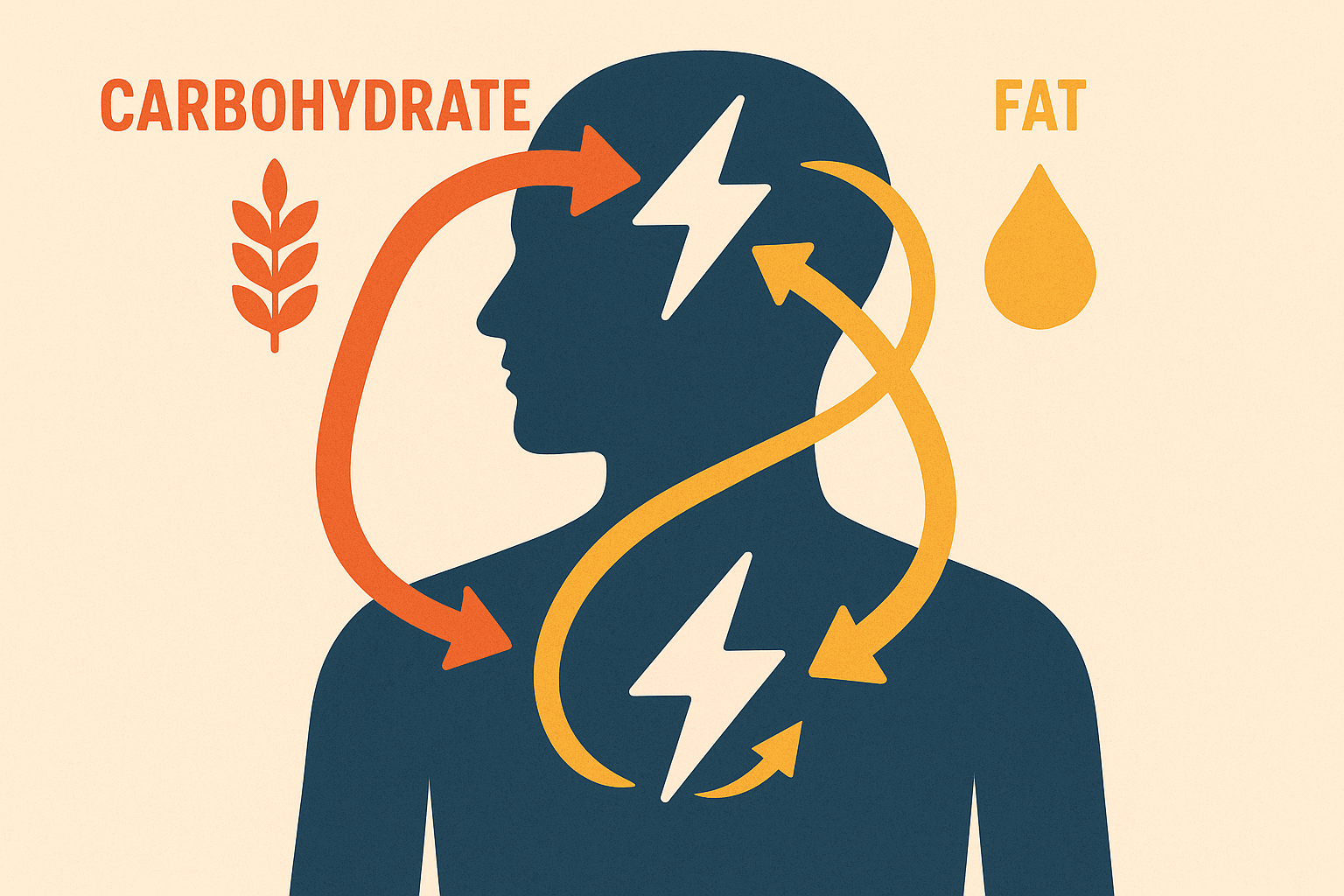
Testing Your Body’s Fuel Preferences
Using simple at-home methods to assess how well your body processes different macronutrients at various times of day provides valuable insights for optimizing your meal plan. This personalized approach helps you understand your unique metabolic patterns rather than following generic recommendations.
My simple testing approach:
- Track energy levels, mood, and hunger patterns with different food combinations
- Notice sleep quality and morning energy based on what you ate for dinner
- Pay attention to digestive responses to identify optimal food combinations
- Adjust meal timing and composition based on how your body actually responds
I discovered that I perform better with higher carbohydrates in the morning and more fats in the evening. This pattern might be completely different for you, which is why personal testing matters more than following someone else’s template.
Mapping Your Individual Blood Sugar Responses
Understanding your individual blood sugar responses to different foods helps optimize meal composition and timing within your calorie targets. This personalized data reveals which foods work best for your unique metabolism and when to consume them for optimal results.
Some people handle sweet potatoes beautifully while others experience blood sugar spikes. Some thrive on oatmeal for breakfast while others need protein-heavy morning meals. These individual differences make personalization essential.
Optimizing Your Gut Health for Better Results
Designing your 1800-calorie meal plan to support beneficial gut bacteria can significantly impact nutrient absorption, inflammation levels, and even mood regulation. Your gut microbiome is as unique as your fingerprint, and supporting its health enhances every aspect of your nutrition plan.
Supporting gut health through strategic food choices works hand-in-hand with simple ways to beat bloat and improve digestion, creating a foundation for better nutrient absorption and overall wellness within your calorie framework.
Rotating Fiber Types for Better Gut Health
Rotating different types of prebiotic fibers throughout your week supports diverse beneficial bacteria populations, which enhances overall gut health and nutrient absorption. This strategic approach ensures you’re feeding different beneficial bacteria rather than just one or two types.
I rotate between Jerusalem artichokes, green bananas, cooked-then-cooled potatoes, and various vegetables throughout the week. Each type of fiber feeds different bacterial strains, promoting overall gut diversity.
Smart Fermented Food Integration
Strategically including fermented foods provides both probiotics and unique nutrients while fitting within your calorie framework. These foods offer benefits that go far beyond their calorie content, supporting digestive health and providing bioactive compounds.
I include small portions of different fermented foods daily – kimchi with lunch, kefir in smoothies, miso in soups. The variety ensures I’m getting different probiotic strains while adding minimal calories to my daily total.
Preventing Your Metabolism From Getting Too Comfortable
Your metabolism adapts to consistent calorie intake over time, potentially slowing progress or reducing energy optimization. Strategic variation prevents this adaptation while maintaining your overall 1800-calorie average, keeping your metabolism responsive and engaged.
Calorie Cycling That Keeps Your Metabolism Guessing
Alternating between slightly higher and lower calorie days within a weekly framework that averages 1800 calories keeps your metabolism responsive and prevents the slowdown that often occurs with consistent calorie restriction.
My cycling approach:
- Design a 7-day cycle: 5 days at 1750 calories, 2 days at 1875 calories
- Time higher calorie days around intense physical activity or high-stress periods
- Monitor weight trends over 4-week periods rather than daily fluctuations
- Adjust cycling ratios based on energy levels and progress markers
This approach prevents the metabolic slowdown that often happens with consistent calorie restriction while maintaining your weekly average.
Mixing Up Your Macros for Better Adaptation
Systematically varying your macronutrient ratios while maintaining calorie consistency prevents metabolic stagnation and optimizes nutrient utilization. This approach challenges your metabolism in different ways while providing variety and preventing boredom.
| Week | Carbohydrates | Protein | Fat | Focus Benefits |
|---|---|---|---|---|
| Week 1 | 40% (720 cal) | 30% (540 cal) | 30% (540 cal) | Balanced foundation |
| Week 2 | 35% (630 cal) | 35% (630 cal) | 30% (540 cal) | Enhanced muscle support |
| Week 3 | 45% (810 cal) | 25% (450 cal) | 30% (540 cal) | Performance optimization |
| Week 4 | Return to preferred ratio based on personal response | Assessment week | ||
My rotation strategy:
- Week 1: 40% carbs, 30% protein, 30% fat
- Week 2: 35% carbs, 35% protein, 30% fat
- Week 3: 45% carbs, 25% protein, 30% fat
- Week 4: Return to baseline and assess which ratio felt most sustainable
Jennifer, a nurse working rotating shifts, used macronutrient cycling to match her varying energy demands. During her night shift weeks, she increased protein to 35% to support recovery, while during day shift weeks, she boosted carbohydrates to 45% for sustained energy. This personalized approach helped her maintain consistent energy levels regardless of her work schedule.
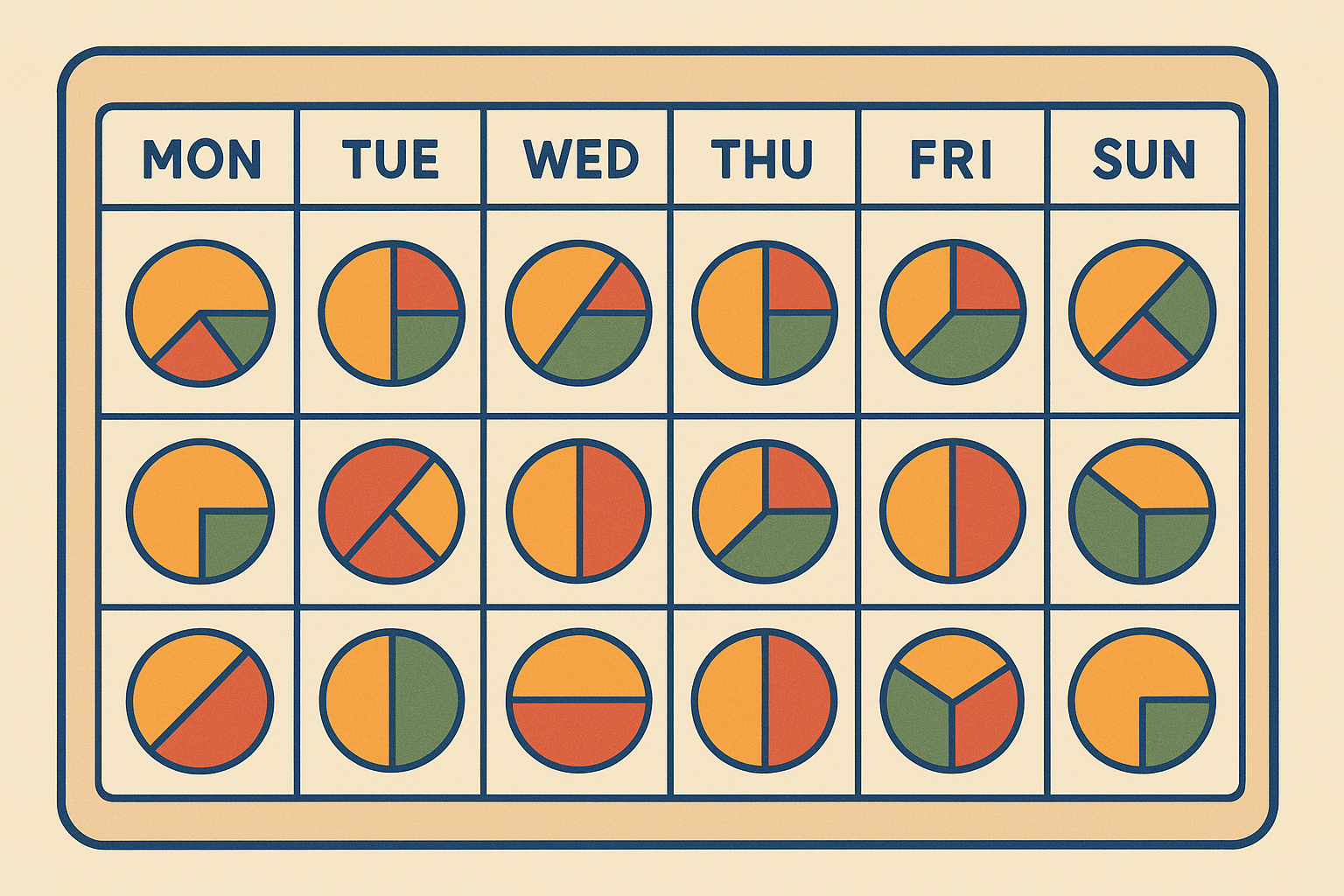
Maximizing Every Bite: The Nutrient Density Game-Changer
Within 1800 calories, every bite matters way more than with higher calorie approaches. This framework focuses on getting maximum nutritional bang for your caloric buck, going beyond basic macro targets to ensure you’re actually absorbing all the good stuff.
Making your calories work harder for you means understanding that the nutrients listed on food labels don’t necessarily reflect what your body actually absorbs. Smart food combining and preparation methods can dramatically increase the nutritional value you extract from your 1800 calories.
Making Your Body Actually Absorb the Good Stuff
Strategic food combining and preparation methods can improve absorption by 200-300% for certain nutrients. This approach maximizes the return on investment for every calorie you consume.
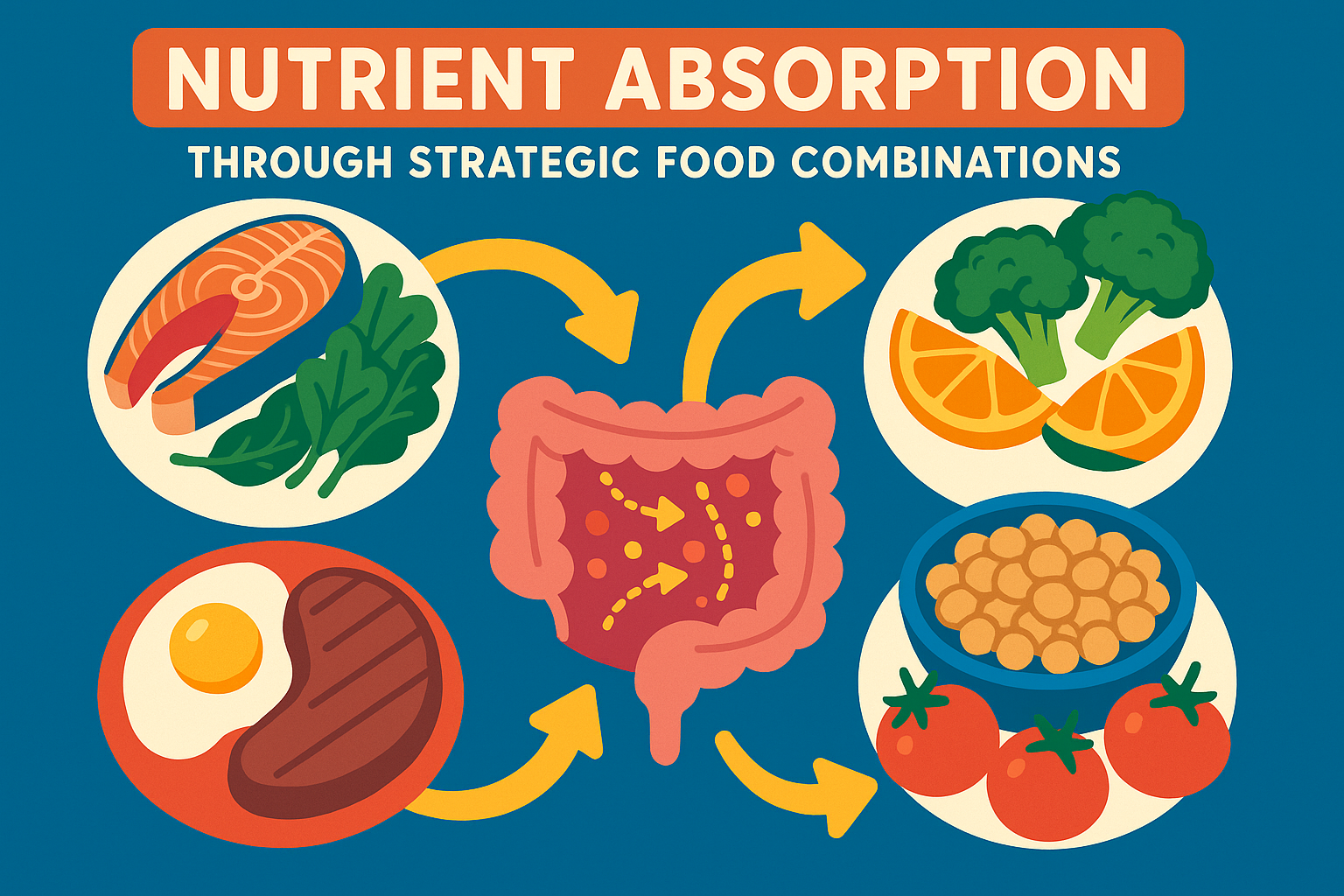
Food Pairing That Actually Makes a Difference
Combining foods strategically to enhance absorption of key nutrients creates meals where the nutritional whole exceeds the sum of its parts.
My Nutrient Pairing Cheat Sheet:
- ☐ Pair iron-rich foods with vitamin C sources (spinach with citrus)
- ☐ Combine fat-soluble vitamins with healthy fats (carrots with olive oil)
- ☐ Include sulfur compounds with cruciferous vegetables (garlic with broccoli)
- ☐ Time calcium and iron intake 2+ hours apart
- ☐ Add black pepper to turmeric for enhanced curcumin absorption
- ☐ Cook tomatoes rather than eating them raw for better lycopene availability
My nutrient synergy strategies:
- Pair fat-soluble vitamins (A, D, E, K) with healthy fats in the same meal
- Combine vitamin C-rich foods with plant-based iron sources
- Include sulfur-rich vegetables with cruciferous vegetables to enhance detox compounds
- Time calcium and magnesium intake separately from iron-rich meals
Avoiding Things That Block Nutrient Absorption
Identifying and minimizing compounds that block nutrient absorption ensures you get maximum value from your carefully planned 1800 calories. These simple preparation techniques can dramatically improve the nutritional value of foods you’re already eating.
It’s recommended to have about 5 servings of protein, 2.5 servings of veggies, 1.5 of fruit, and 6 servings of carbs and grains per day within your calorie framework, according to MyFitnessPal. This serving-based approach ensures balanced nutrition while staying within your 1800-calorie target.
My anti-nutri ent strategies:
- Soak nuts and seeds to reduce compounds that block mineral absorption
- Keep coffee and tea away from iron-rich meals by 2+ hours
- Cook tomatoes to increase lycopene bioavailability
- Ferment or sprout grains and legumes to improve mineral absorption
Turning Food Into Medicine Through Smart Choices
Moving beyond basic nutrition to include foods that provide therapeutic compounds turns your meal plan into a daily wellness protocol. This approach recognizes that food can be medicine when chosen and combined strategically.
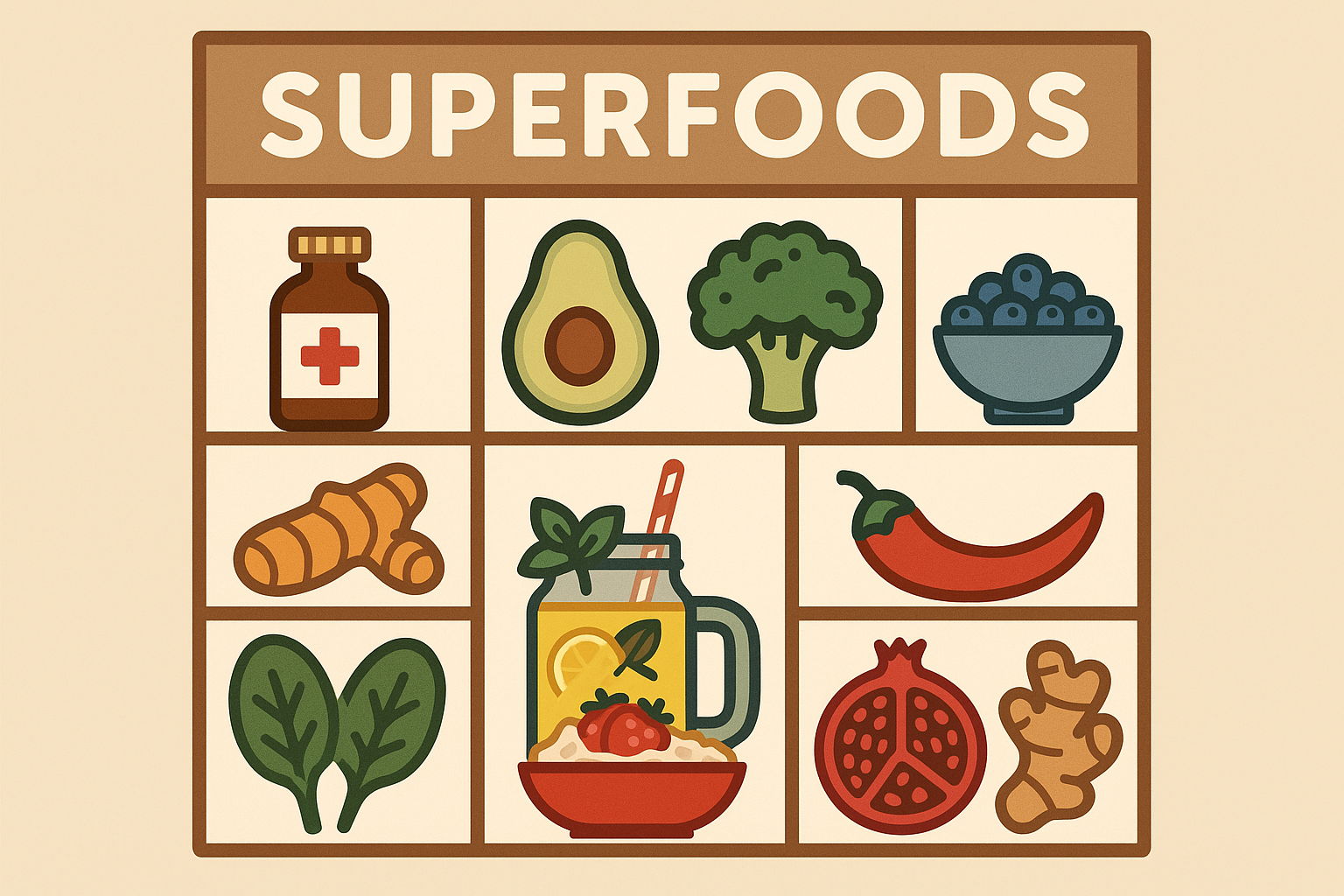
Anti-Inflammatory Foods That Actually Work
Strategically including high-polyphenol foods provides anti-inflammatory and antioxidant benefits while supporting gut health and brain function. These powerful plant compounds offer benefits that extend far beyond their calorie content, making them essential components of an optimized approach.
I prioritize deeply colored fruits and vegetables, which typically contain the highest concentrations of these beneficial compounds. Blueberries, dark leafy greens, and colorful bell peppers become staples rather than occasional additions.
Stress-Fighting Foods for Demanding Days
Including foods with adaptogenic properties helps your body manage stress and maintain energy balance throughout demanding days. These foods work synergistically with your meal timing strategies to support optimal hormone balance and resilience.
Mushrooms, certain herbs, and specific teas provide adaptogenic benefits that support your body’s stress response systems. I incorporate these regularly rather than relying on supplements alone.
Building Gut Health Through Food Diversity
Rotating through different types of prebiotic fibers supports a diverse gut microbiome, which influences everything from immune function to mood regulation. This systematic approach ensures you’re nurturing the full spectrum of beneficial bacteria.
My diversity approach:
- Include 5 different colored vegetables daily to ensure variety of beneficial plant compounds
- Rotate between different types of resistant starches (cooled potatoes, green bananas, cooked-then-cooled rice)
- Include fermented foods from different cultures (kimchi, kefir, miso, sauerkraut)
- Track digestive health and energy levels as you increase prebiotic diversity
Supporting gut health through prebiotic diversity aligns perfectly with understanding how drinking vinegars support gut health, providing another tool to enhance your digestive wellness within your meal planning framework.
Healthy meal planning gives you a diverse range of nutrients and flavors so you feel satisfied and energized all day, as noted by MyFitnessPal. This satisfaction factor is crucial for long-term adherence to your approach.
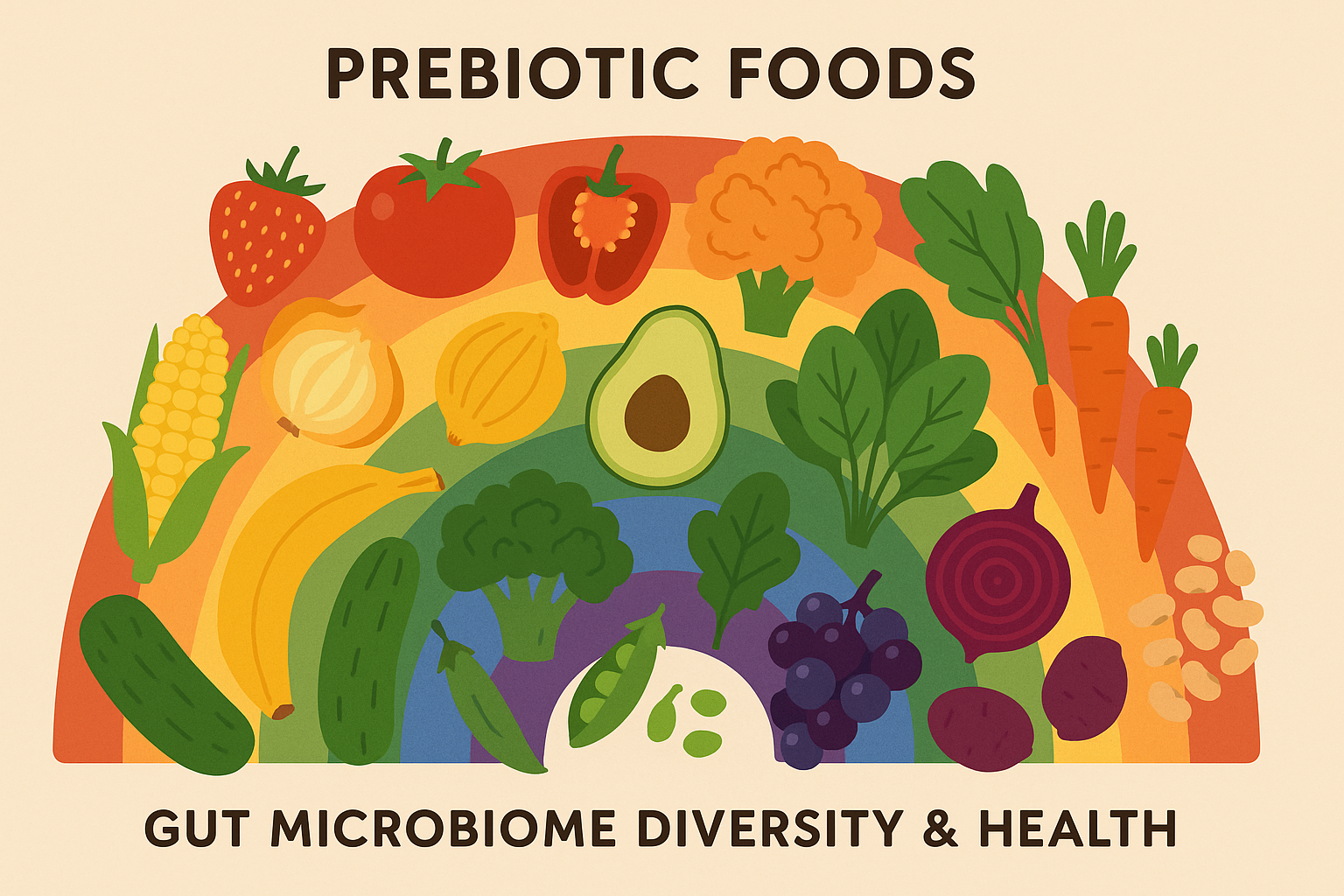
And hey, if you want to add some collagen powder to your morning coffee, go for it. But honestly, getting your food timing right will probably make a bigger difference than any supplement. When you’re ready to take your nutrition to the next level with high-quality supplements that complement your optimized meal plan, Organic Authority’s carefully curated collagen products can fill gaps that even the most well-planned 1800 calories might miss.
Final Thoughts
Look, this isn’t about becoming a nutrition robot. It’s about working WITH your body and your actual life instead of against them. This comprehensive approach represents a fundamental shift from generic calorie counting to personalized, science-based nutrition that actually makes sense for real humans.
The key is recognizing that successful meal planning isn’t about perfection – it’s about creating systems that support your goals while fitting seamlessly into your real life. Pick one or two strategies that seem doable, try them for a few weeks, and see what happens. Most importantly, stop expecting perfection from yourself. You’re human, not a meal-planning machine.
I used to meal prep these elaborate Buddha bowls that looked Instagram-perfect and tasted like cardboard. Now I make simple stuff I actually want to eat. Turns out sustainability beats perfection every single time.
Start with one or two strategies that resonate most with you, implement them consistently for 2-3 weeks, then gradually layer in additional approaches as they become second nature. As you implement these strategies, remember that learning how to cook delicious oatmeal every time can provide a perfect foundation meal that fits seamlessly into your morning metabolic window, offering sustained energy and flexibility within your calorie targets.
